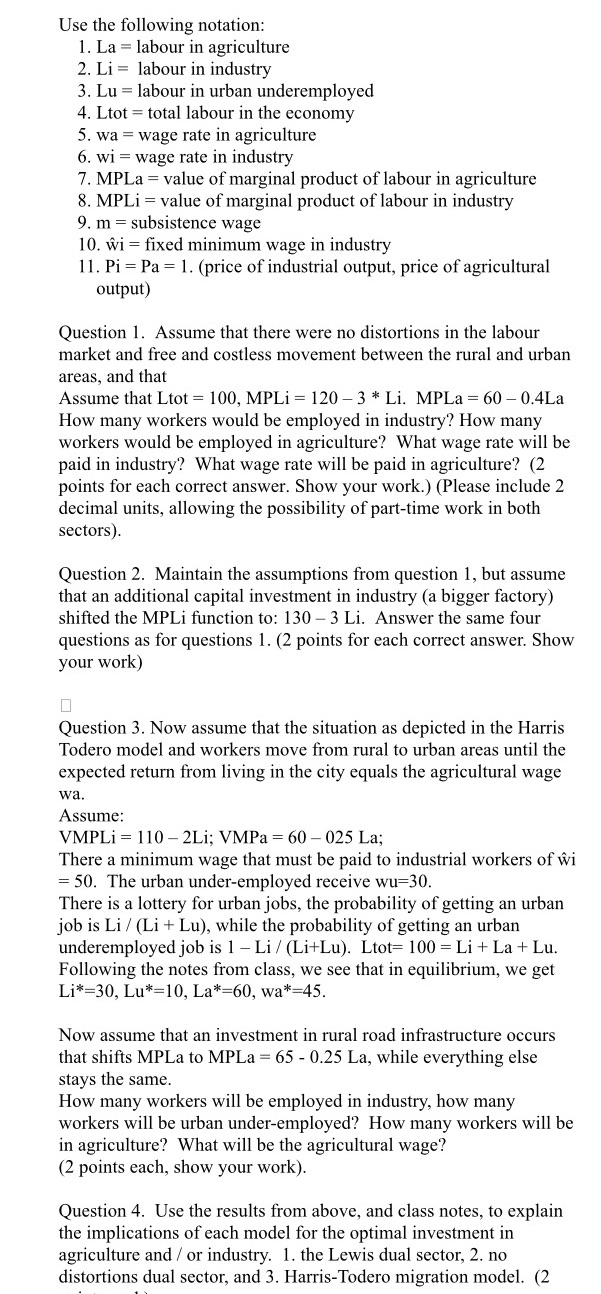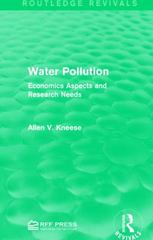Please only answer question 4.
Use the following notation: 1. La = labour in agriculture . Li = labour in industry . Lu = labour in urban underemploycd . Lto: = total labour in the economy . wa = wage rate in agriculture . wi = wage rate in industry . MPLa = value of marginal product of labour in agriculture . MPLi = value of marginal product ot'iabour in industry 9. m = subsistence wage l{}. wi = fixed minimum wage in industry I l. Pi = Pa = |. (price ofindustrial output, price of agricultural output) oeuaxmemtu Question I. Assume that there were no distortions in the labour market and free and eostless movement between the rural and urban areas, and that Assume that Ltot = 100, MPLi = 120 3 * Li. MPLa = 60 0.4La How many workers would be employed in industry? How many workers would be employed in agriculture? What wage rate will be paid in industry? What wage rate will be paid in agriculture? (2 points for each correct answer. Show your work} [Please include 2 decimal units, allowing the possibility of parttime work in both sectors). Question 2. Maintain the assumptions from question 1, but assume that an additional capital investment in industry (a bigger factory) shifted the MPLi function to: 130 3 Li. Answer the same four questions as for questions 1. (2 points for each correct answer, Show your work) Question 3. Now assume that the situation as depicted in the Harris Todero model and workers move from rural to urban areas until the expected return from living in the city equals the agricultural wage wa. Assume: VMPLi = llfl 2Li; VMPa = 60 025 La; There a minimum wage that must be paid to industrial workers of at = 50. The urban under-employed receive wu=3ll There is a lottery for urban jobs, the probability of getting an urban job is Li i\" [Li + Lu], while the probability ofgetting an urban underemployedjob is l Li I (Li+Lu). Ltot= 100 = Li + La + Lu. Following the notes front class, we see that in equilibrium, we get Li*=3l}. Lu*=l I}, La*=6[l, wa*=45. Now assume that an investment in rural road infrastructure occurs that shifts MPLa to MPLa = 65 0.25 La, while everything else stays the same. How many workers will be employed in industry, how many workers will be urban underemployed? How many workers will be in agriculture? What will be the agricultural wage? (2 points each, show your work). Question 4. Use the results from above, and class notes, to explain the implications of each model for the optimal investment in agriculture and t\" or industry. 1. the Lewis dual sector, 2. no distortions dual sector, and 3. Harris-Todcro migration model. (2







